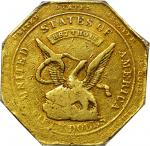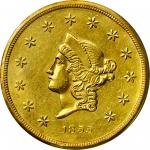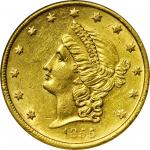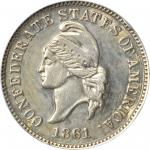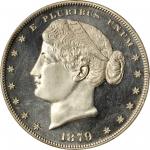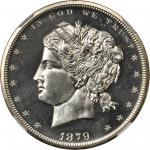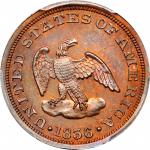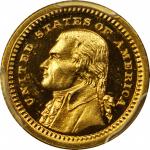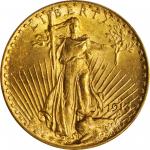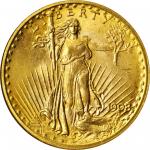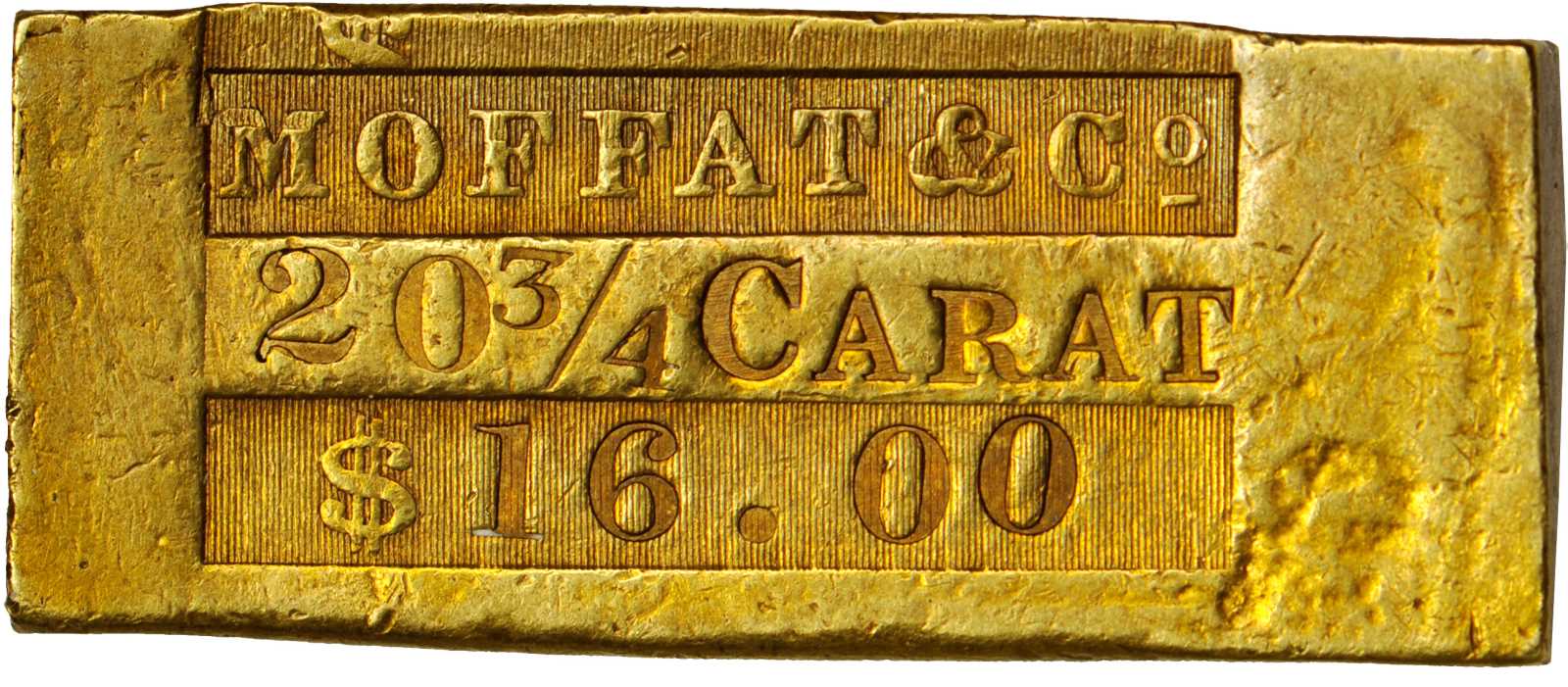1849年16美元金条 PCGS AU 55
(1849) Moffat & Company $16 Gold Ingot. K-3. Rarity-6+. AU-55 (PCGS). Gold Shield Holder.,28.2 grams. 14.7 mm x 35.2 mm x 3.5 mm. A lovely specimen of this famous and distinctive territorial gold issue. The surfaces are deep honey-gold with a trace of deeper orange toning in the recesses. A few scattered marks are noted, as typical of such pieces, but these are not to be confused with the natural irregularities that resulted from the casting process, features seen on nearly all ingots. These are mostly seen at either end, beyond the punch marks, and on the reverse at the same positions since the punches themselves served to smooth out the natural roughness. The small group of depressions just right of the denomination is among these natural artifacts of production, and make this piece easy to identify.
The primary punches consist of two rectangular cartouches. Within the top one is the firm name, in relief, MOFFAT & Co. In the bottom is the $. The remaining area within the cartouches is neatly vertically ribbed. The purity, 20 3/4 [CARAT] and value 16.00 are punched into the bar by hand, apparently with single letter punches. After studying several images of these ingots, we have concluded that CARAT might well be part of the original punch, applied at the same time as the cartouches and MOFFAT & Co., though this is incuse. Comparison of several ingots shows that the relationships of the letters of CARAT seem constant to the letters of MOFFAT above. The design elements are fairly well placed on this specimen, with even borders at the top and bottom. At the upper left, on the rim above the O of MOFFAT, there is a partial $, a remnant of an erroneous punching of the main design elements which adds character to this lovely bar.<p>For much of American numismatic history, ingots have been great rarities and for the most part, little more than curiosities occasionally collected alongside the better understood coins. The recovery of the extraordinary gold bars from the wreck of the <em>S.S. Central America </em>has significantly changed this, shedding much light on this important commercial medium. The $16 Moffat ingots are a small exception to the rule, however, and represent an important bridge between the realm of round coins and that of the usual rectangular assay ingots.
Most California Gold Rush era ingots were objects created out of convenience and varied widely in composition and value, most being essentially unique. The primary purpose of creating them was to change raw ore into units that could be easily accounted for, transported and exchanged to banking institutions or mints in the east. They were ephemeral, and never intended to survive.<p>The $16 Moffat ingots were different. They were consistent in size, carat, weight and value. As is clear from the almost universal uniformity, they were intended to serve as circulating currency items. There are two unique examples bearing the Moffat name, one denominated $14.25, the other $9.43. These are both in the Smithsonian Institution and were acquired with the vast Lilly Collection. Beyond these two, all others known are marked as 20 3/4 carat and $16.00 face value, which corresponded to the value of a Latin American eight escudos or "doubloon." This was the highest value circulating coin in the United States until the issuance of the first $20 gold pieces by the Mormons in Utah, and in 1850, by the United States Mint.
Eight escudos were legal tender until 1857 and circulated even later, so the $16 denomination would have been comfortable and sensible to the people of the era. As the $16 ingots were intended as a circulating medium, they constituted an emergency coinage for early Gold Rush California, and they have always seen avid collector interest. Indeed, a specimen of this issue turned up at the British Numismatic Society in London at their meeting of November 22, 1849, mere months after initial production. Another found its way into the Mint Cabinet as early as 1850, now at the Smithsonian. Even Augustus Humbert included one in his own collection. When it was sold by the Chapmans in 1902, they wrote that they believed it to be the first public auction offering of one. Further evidence of the <em>intent</em> behind the $16 ingots appeared in the 1902 catalog, as the lot included a handwritten note, "California Currency from Moffat & Co. to A. Humbert, Esq." It would appear that the firm delivered an example to Humbert personally, and that they presented it as currency or he accepted it as such. It sold to Virgil Brand, who acquired three other examples, in addition.
The Moffat ingots are quite rare and are frequently held closely by collectors such that opportunities to acquire them can be separated by many years. The availability of the <em>Central America </em>bars, beginning around 2000, increased awareness of this medium and caused a substantial increase in collector interest. As such, the prices attained for the Moffat pieces have grown steadily over recent years. The Eliasberg specimen brought $18,700 in 1996, and $27,600 in our sale just four years later, right about the time the offerings of the <em>Central America </em>bars began. Today, the market for such pieces is well established and the landscape is very different. We sold the Kagin and Breen plate piece in 2006, just six years later, for $109,250 (graded AU-55 by PCGS), another brought $199,750 in 2014 (graded AU-58 by NGC) and most recently the Eliasberg specimen reappeared in Kagins September 2017 sale (graded AU-50 PCGS), realizing $240,875. The present example is graded higher than the one most recently sold.
It has been off the market since 1991 and comes with a fine provenance back to our own 1944 sale of the J.F. Bell Collection of United States and Pioneer Gold Coins, a presentation long famous for its extensive rarities including some of the most important territorial issues. This piece was counted among the highlights, and was later used as the plate piece in the <em>Guide Book of United States Coins</em>, from 1980-1996. The Moffat ingot is an ideal centerpiece of any advanced territorial or U.S. gold collection for its unique history and form, as well as its considerable rarity. PCGS has only 11 grading records for Moffat $16 ingots. Just two records are higher than this one, but none has been called Mint State.,Ex our (Stacks) sale of the J.F. Bell Collection, December 1944, lot 1023; M. Max Mehls sale of the Alfred Walters Collection, June 1951, lot 2145; James Kellys ANA Sale of August 1956, lot 1836; Jess Peters ANA Sale of August 1973, lot 955; RARCOAs sale of the N.M. Kaufman Collection, August 1978, lot 17; RARCOA, to the present consignor, August 1991.,

